All sample positioners and sample environments for the PXRD2D instrument are aligned using the main hexapod. Specifications of the hexapod can be found here: https://symetrie.fr/en/hexapods/breva/. The hexapod can translate up to ±50 mm in the vertical direction and up to ±75 mm in the horizontal directions.
To simplify mounting and exchanging different setups we have designed a bespoke kinematic mount. Detailed drawings for designing you own sample environment can be found at the bottom of this page.
At DanMAX we strive to develop a large portfolio of positioners and sample environments to allow a wide range of experiments. Here is the once currently available at the beamline:
Capillary spinner (PXRD2D):
A spinner directly driven by a stepper motor. Can rotate with up to 5 Hz. Uses manual Huber 1002 goniometer heads for alignment. Samples are mounted using SPINE magnetic caps.
The spinner can be configured in three different ways: Rotation around the vertical axis (minimum SDD ~170 mm), rotation around the horizontal axis centered on the hexapod (minimum SDD ~170 mm), and rotation around the horizontal axis downstream end on the hexapod (PDF configuration, minimum SDD ~ 95 mm). The PDF configuration can unfortunately not be used with the Cryostream.
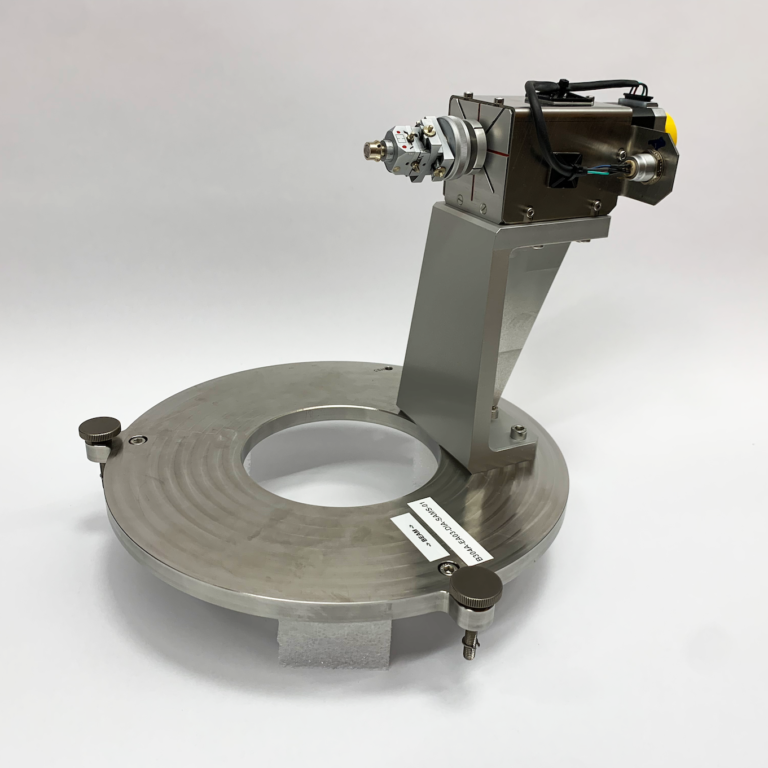
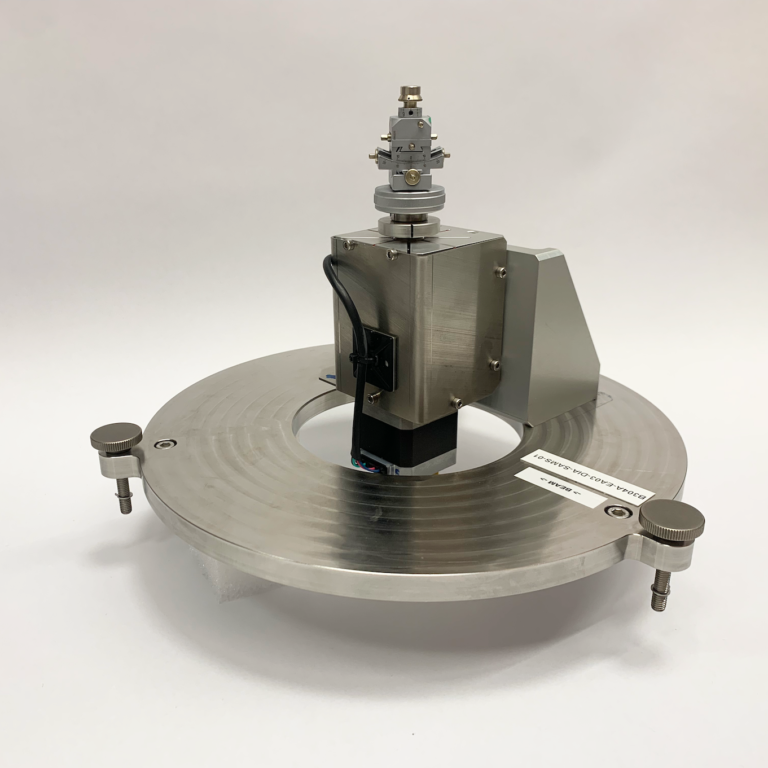
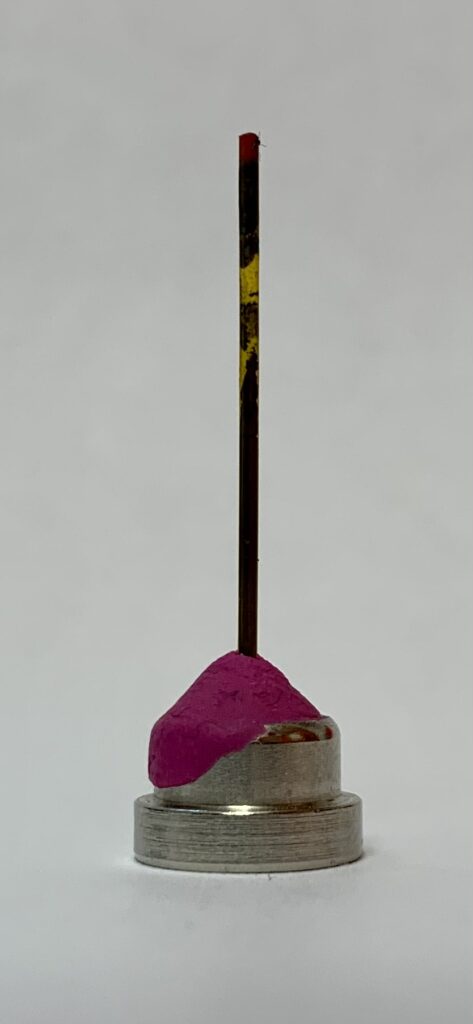
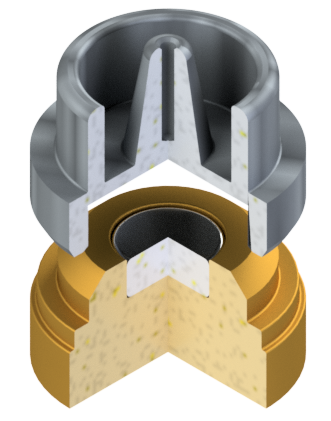
Sample mounts (PXRD2D and Imaging):
The recommended sample mount on the PXRD2D instrument is the SPINE magnetic base system developed for macromolecular crystallography. These bases can be used as is for capillaries up to Ø 0.5 mm. If larger capillaries are needed it is possible to drill a larger hole in the base.
More information on capillaries and filling can be found here.
XY stage and battery holders (PXRD2D):
2D scanning stage based on two Standa 8MT50 stages with rotary encodes and a full step resolution of 5 µm. Scan area 150 mm by 100 mm. One of the two axis can be used for continuous scans. The stage is equipped with a Newport M-BKL-4 kinematic base for easy exchange of the sample holder. Both axis are compatible with fast continuous scanning (fly scans). Only one axis can be scanned continuously at any time.
Available sample holders:
- Holder for 6 or 8 AMPIX (Borkiewicz, et al.) cells.
- Holder for 6 CR2032 coin cell batteries (w. windows in the steel casing)
- Empty kinematic top plates for user equipment.
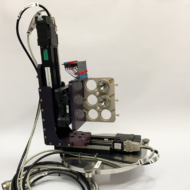
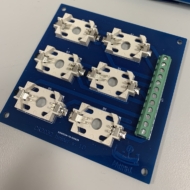
µXRD and µXRF mapping stages
A 2D scanning stage based on two OWIS LIMES 84N-270 stages with linear encodes and a 1-2 µm repeatability. The scan area is approximately 150 mm by 150 mm in the normal configuration but can be expanded up to approximately 250 mm by 250 mm upon request. One of the two axis can be used for continuous scans. The stage is equipped with a Newport M-BKL-4 kinematic base for easy exchange of the sample holder. Both axis are compatible with fast continuous scanning (fly scans). Only one axis can be scanned continuously at any time.
The samples are normally fixed in 44 mm by 44 mm aluminum frames (~0.5-1 mm thick) using Kapton tape. The frames are available with various aperture designs.
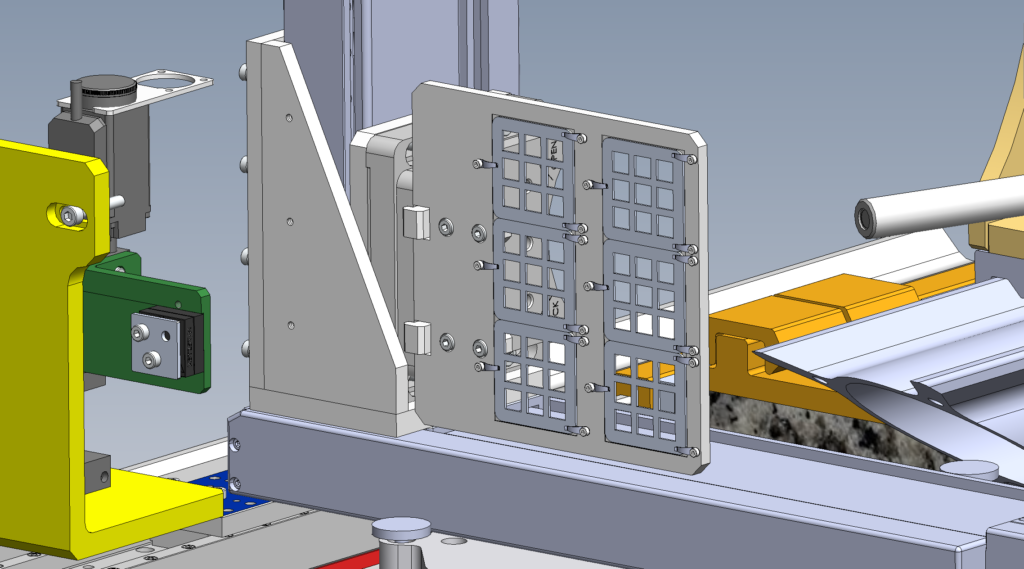
Use our calculator to estimate the scan time for µXRD and µXRF experiments. The calcuator can be found here.
Rotation and XRD-CT (PXRD2D):
A Huber 408 goniometer is mounted with a rotation axis that is either horizontal or vertical on a linear stage (Standa 8MT50). A manual Huber 1002 goniometer head is used for the alignment of the sample. The goniometer is not equipped with an encoder. For XRD-CT the linear stage is scanned continuously and rotation is done in steps.
X scanning stage (PXRD2D):
1D scanning based on a Standa 8MT50 stages https://www.standa.lt/products/catalog/motorised_positioners?item=308&prod=motorized_translation_stages with rotary encodes and a full step resolution of 5 µm. Scan length 200 mm. This stage is compatible with fast continuous scanning (fly scans).
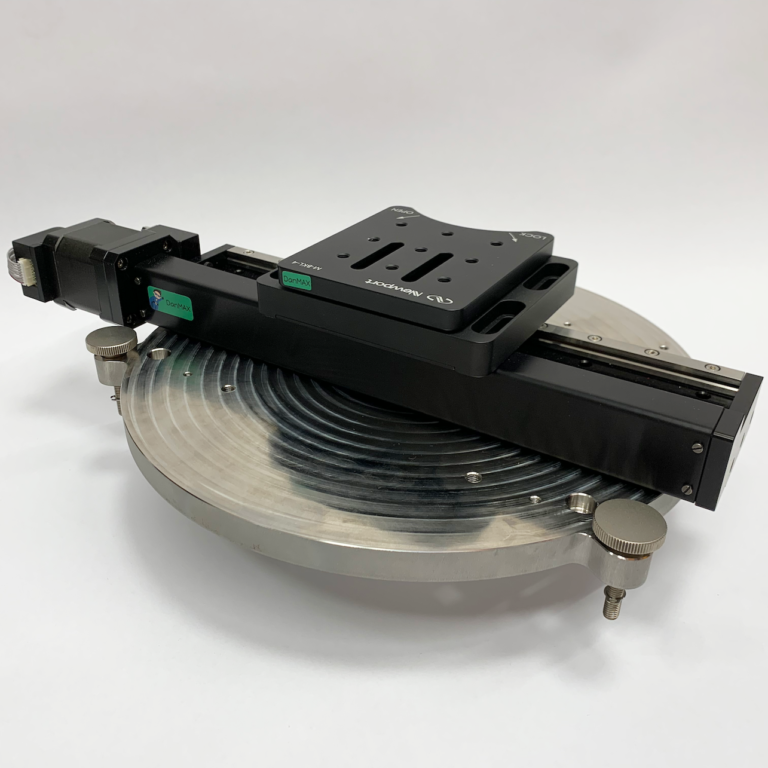
Diamond Anvil Cell holder (PXRD2D):
RY + XZ motion to align a diamond anvil cell (DAC) precisely in the X-ray beam. The X motion stage is compatible with fast continuous scanning (fly scans) for rapid DAC centering. The holder is mounted on a kinematic base to allow off-line Raman spectroscopy. It further supports gas membranes for pressure control. The pressure in the membrane can be controlled with the fully integrated Truck PACE 5000 pressure controller – see below.
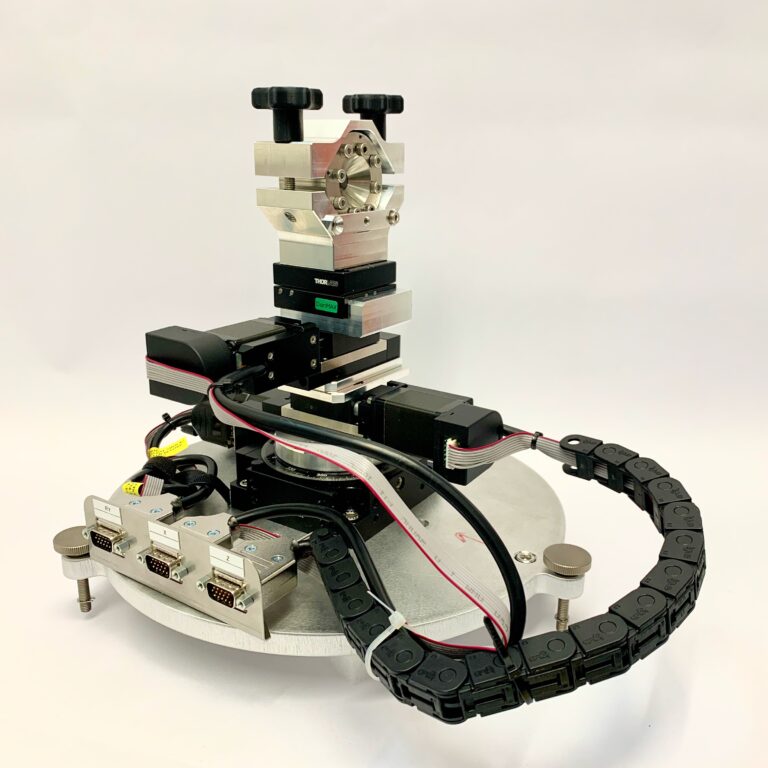
Solvothermal reactor (PXRD2D):
Capillary reactor setup for in-situ solvothermal experiments. The pressure is provided by an HPLC pump and heat with the HyBec heater – see below. The system is enclosed in a splash box to prevent spills. The system is compatible with both PXRD and PDF (Qmax ~17 Å-1). 8 sample holders (aka. ‘shoes’) are available at the beamline for increased throughput. Setting up the system including alignment and temperature calibration etc. takes approximately 1.5 shifts (6 hours). Both temperature and pressure are controlled via the control system and temperature and pressure values are recorded in the experimental metadata.
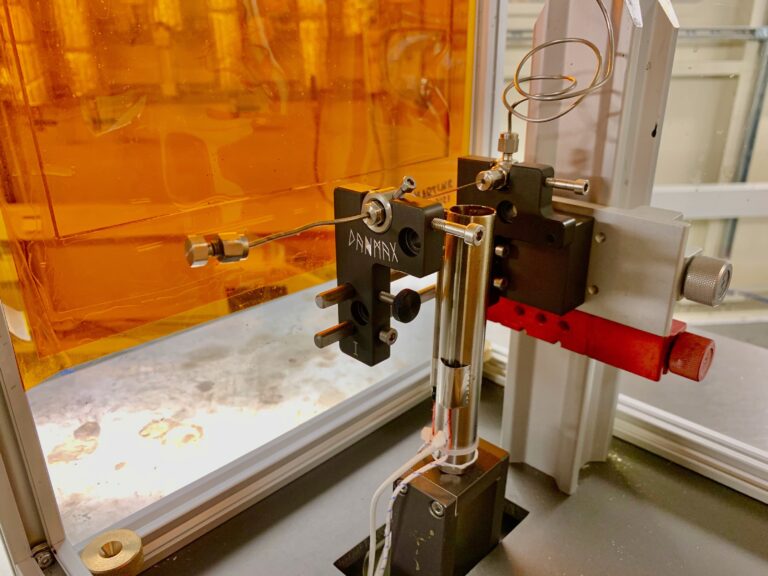
ARΩS – Aarhus Rapid Ohmic Sintering furnace (PXRD2D):
Sintering furnace with very rapid heating rates (up to 150 Ks – i.e. 9000 K/minute!) and a maximum temperature of 1500C. The design is based on the publication from Wang et al. and adapted for PXRD measurements.
It is possible to rotate the sample around the vertical axis for texture studies. The maximum rotation angle is 60 degrees.
Data is collected in transmission geometry and diffraction up to ~33 degrees in two theta (Qmax ~9Å-1 at 35 keV). Setup and calibration takes approximately 2 shifts (8 hours). The furnace is controlled in a standalone application that records temperature and power use. Synchronisation is handled using trigger signals recorded by both the BL control system and the AROS SW.
 | 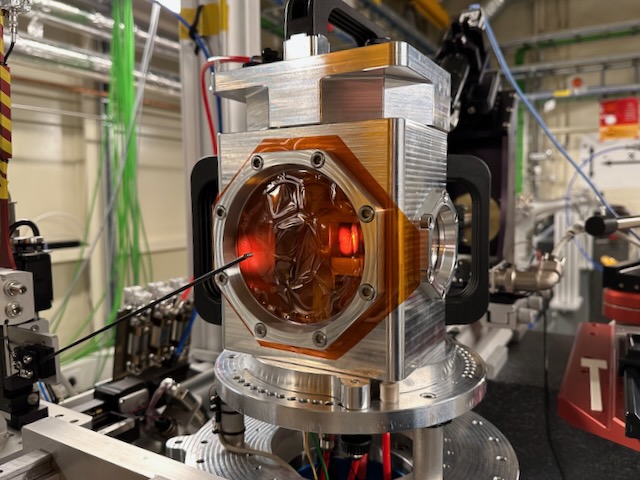 |
Oxford Cryosystems Cryostream 800plus (PXRD2D and Imaging):
Liquid nitrogen cryostream capable of operating from 80 to 500 K (https://www.oxcryo.com/product/cryostream-800). Ramp rates from 1 to 360 K/h (0.0166 to 6 K/min). The cryostream can be used with the capillary spinner in horizontal and vertical geometry (but not in PDF configuration) and with the rotation stage.
Automatic refill is possible ensuring continuous operation. Control, monitoring, and metadata collection is implemented in the control system. Positioning of the cryostream is flexible but manual.
HyBec Heater (RT – 1000 K) (PXRD2D):
Heat gun with resistive heating of air or nitrogen gas. Placed below the sample through the hole in the hexapod. The unit is controlled using the Lakeshore 336 temperature controller that is fully integrates in the control system. Calibration of the sample temperature (and potentially PID parameter adjustment) must be performed for this unit before use (~1-2 hours).
Druck PACE 5000 pressure controller (PXRD2D and Imaging):
Fully integrated pressure controller that can deliver a controlled pressure (and pressure ramp) from 0 to 200 bar of inert gas to the sample position. The unit is controlled via the control system, and the pressure is recorded are the experimental metadata.
Cellkraft P-2 humidity controller (PXRD2D and Imaging):
Fully integrated humidity controller with flow rates from 0.01 to 2 L/min, 0-100% RH, and temperature control above RT. Temperature, humidity, and pressure are recorded in the experimental metadata. Sample environments can be heated using e.g. a water bath (pool devices exist at MAX IV). An experimental sample environment for XRD experiments – contact beamline staff for more details.
Breadboard (PXRD2D):
To position other equipment in the beam we have a generic M6 25 mm pitch breadboard that can be mounted on the hexapod. The nominal distance from the top of the breadboard to the beam with the hexapod in the middle position is 185 mm. Please contact beamline staff before submitting your proposal if you need more vertical space.
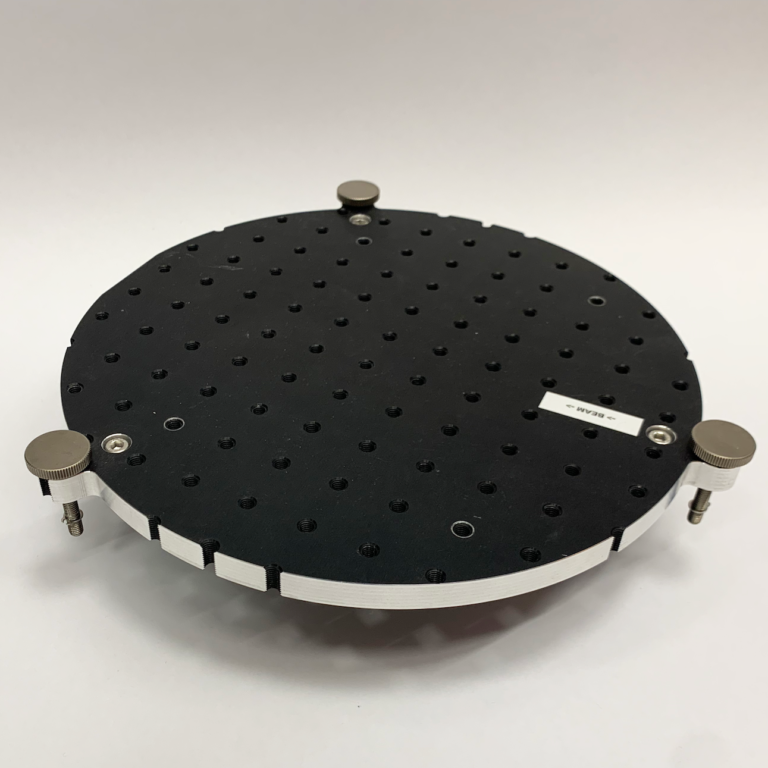
Building / interfacing your own sample environments to DanMAX:
Any equipment must be approved by MAX IV and DanMAX staff before use. Please contact the DanMAXstaff for information about interfacing to other instruments and systems, e.g. control system, motion control, compressed air etc.
PXRD2D:
To minimize the time used to install and align user-supplied sample environments, we propose that users design their setups to match the kinematic mount installed on the large hexapod on the instrument. A detailed drawing of the interface and SE envelope on the PXRD2D instrument can be found here, and a reference CAD model of the user-supplied interface plate is available here.
Imaging and tomography:
The current portfolio of sample environments for imaging and tomography is relatively limited. Users can design and build their own sample environements to be used at the instrument. This section will be updated soon, and more information can be obtained by contacting the beamline staff.
Electrical connections: The equipment can be connected using a 25-pin SUB-D connector if electrical signals are required.
Size: The footprint (radius) of the device should ideally be smaller than 75 mm (<Ø 150 mm diameter). The distance from the base to the beam should be between 100 mm and 250 mm.
Weight: The maximum weight of the equipment if XY positioning is required is 5 kg. If the unit includes XY alignment, up to 45 kg can be accommodated.
Other equipment
Lakeshore model 336 (https://www.lakeshore.com/products/categories/overview/temperature-products/cryogenic-temperature-controllers/model-336-cryogenic-temperature-controller) temperature controller with thermocouple card. The unit is controlled via the control system and the temperature is recorded in the experimental metadata. The controller has a heater output of up to 100 W. In case more power is required it is possible to use an analog output from the controller and a (user supplied) external power supply. (Compatible with PXRD2D and Imaging)
Biologic VMP3 potentiostat (https://www.biologic.net/products/vmp3/) with 14 channels. Two ‘low current’ channels are available. The potentiostat uses Biologic EC lab control software. Electrochemistry data is not collected in the normal X-ray data files but time stamps are collected in both datasets to align them in the data analysis. (Compatible with PXRD2D and Imaging)
PandABox (https://quantumdetectors.com/n/products/pandabox/) used for handling triggering in- and outputs (TTL signals) in addition to facilitating continuous scans. Please contact the DanMAX staff before submitting you proposal requiring TTL triggering. (Compatible with PXRD2D and Imaging)
Gas mixing panel. The panel makes it possible to mix two different gases and use these in either flow or static conditions up to 200 bar. The system can be purged via a vacuum line. Only non-toxic and non-flammable gases are permitted at this time. No sample cells are available at DanMAX, thus users must bring their own sample cell. Please contact DanMAX staff before submitting you proposal requiring the use of gases. The unit is controlled via the control system and the pressures are recorded in the experimental metadata. (Compatible with PXRD2D and Imaging)
Laboratory equipment
In the Sample Environment area adjacent to the control room, it is possible to manipulate benign samples. Dangerous and/or toxic samples must be handled in the chemistry laboratory across the hall. Please contact the DanMAX staff to book the chemistry lab if needed.
Equipment in the Sample Environment area:
- Microscope: Olympus SZX16 microscope with 0.5x and 1.0x objectives. Digital camera and encoder on zoom.
- Capillary filling equipment (may be moved to the chemistry lab if needed)
- Soldering iron and heat gun – please consult the DanMAX staff for safety guidelines before using the equipment.
- 10 ton press
Equipment in the chemistry laboratory
- Fumehood
- Glovebox
- Polishing equipment
- Vacuum oven
Sample Environments and Detector Support (SEDS) group at MAX IV
The SEDS group maintain a pool of shared sample environments – the SEDS website is not yet available, please contact the BL staff to enquire about the availability of SEDS equipment.